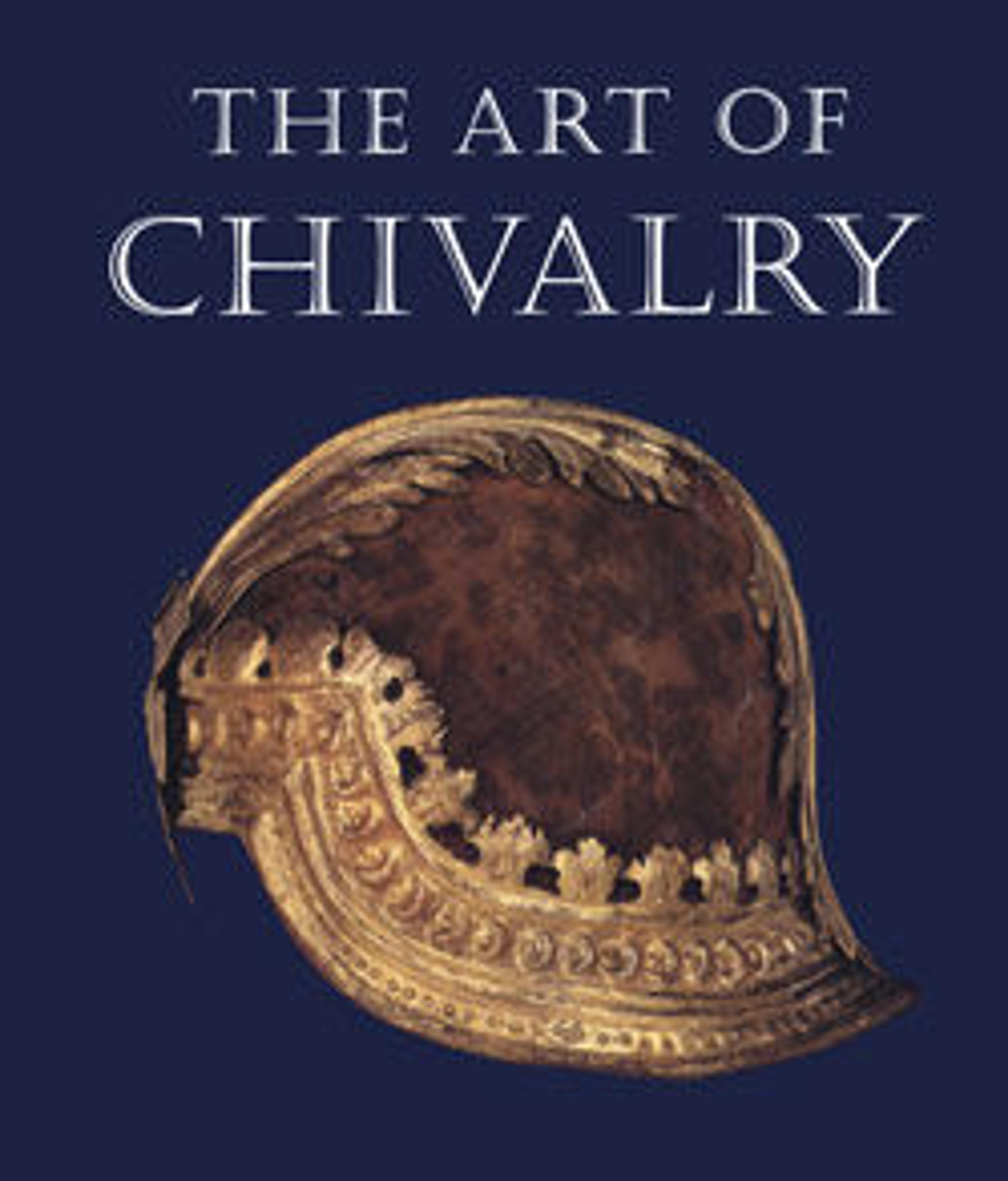Glaive of Emperor Rudolf II (reigned 1576–1612)
The knife-like blade is similar to another in the Metropolitan Museum's collection (04.3.97). Two-thirds of each side are etched with a dense strapwork design on a dotted and blackened ground, with traces of gilding. The decoration includes the insignia of Emperor Rudolf II: on the left side, from top to bottom, the date 1577 and the emperor's motto AD SIT (literally "He [God] be with me," but also an acronym for the motto Auxilium Domini Sit Iniquis Terror, "The assistance of God is a terror to the evil ones"), a double-headed eagle surmounted by an imperial crown and holding an arrow in his right talon, the Bindenschild of Austria, and the number 24; on the right side the letter R surmounted by an imperial crown, and surrounded by a sword, scepter, orb, and cross above a shield bearing the arms of Hungary and Bohemia. Etched at the base of the left side of tha blade, near the back, is the etcher's monogram H S (Hans Stromaier), and on the right side a tiny shield with a Greek cross with two pellets above, the etcher's coat of arms. The rectangular shaft of wood is original and retains traces of its brown velvet covering and iron nail heads; a tassel is fastened below the socket.
This glaive is one of a number of identical weapons carried by the bodyguard of Hartschiere of Emperor Rudolf II (reigned 1576–1612) and documented as having been made in Augsburg by the cutler Oswald Salzhuber and etched by Hans Stromaier. A full-scale color-washed pen and ink drawing of one of these glaives, presumably made by Stromaier himself, is preserved in the Vienna Archives, and probably served as a presentation design sent to the emperor in Prague for his approval. Six of these glaives are preserved in the Vienna Waffensammlung, each of them etched with a number, the highest being 74; which indicates that at least seventy-four similar arms were made. The Metropolitan Museum's glaive is the twenty-fourth of the series.
In the same year, 1577, Hans Stromaier is also known to have etched 110 halberds for the Trabanten bodyguards of the emperor. The hapsburg court had two types of bodyguards: the Hartschiere (from French archiers, archers), who carried glaives, were noblemen; the Trabanten, who carried halberds, were commoners.
This glaive is one of a number of identical weapons carried by the bodyguard of Hartschiere of Emperor Rudolf II (reigned 1576–1612) and documented as having been made in Augsburg by the cutler Oswald Salzhuber and etched by Hans Stromaier. A full-scale color-washed pen and ink drawing of one of these glaives, presumably made by Stromaier himself, is preserved in the Vienna Archives, and probably served as a presentation design sent to the emperor in Prague for his approval. Six of these glaives are preserved in the Vienna Waffensammlung, each of them etched with a number, the highest being 74; which indicates that at least seventy-four similar arms were made. The Metropolitan Museum's glaive is the twenty-fourth of the series.
In the same year, 1577, Hans Stromaier is also known to have etched 110 halberds for the Trabanten bodyguards of the emperor. The hapsburg court had two types of bodyguards: the Hartschiere (from French archiers, archers), who carried glaives, were noblemen; the Trabanten, who carried halberds, were commoners.
Artwork Details
- Title: Glaive of Emperor Rudolf II (reigned 1576–1612)
- Etcher: Hans Stromair (German, Augsburg, 1524 or 1525–ca. 1583)
- Date: dated 1577
- Geography: Augsburg
- Culture: German, Augsburg
- Medium: Steel, wood, textile, gold
- Dimensions: L. 100 1/2 in. (255.27 cm); blade L. 23 in. (58.42 cm)
- Classification: Shafted Weapons
- Credit Line: Gift of George D. Pratt, 1925
- Object Number: 25.188.18
- Curatorial Department: Arms and Armor
More Artwork
Research Resources
The Met provides unparalleled resources for research and welcomes an international community of students and scholars. The Met's Open Access API is where creators and researchers can connect to the The Met collection. Open Access data and public domain images are available for unrestricted commercial and noncommercial use without permission or fee.
To request images under copyright and other restrictions, please use this Image Request form.
Feedback
We continue to research and examine historical and cultural context for objects in The Met collection. If you have comments or questions about this object record, please contact us using the form below. The Museum looks forward to receiving your comments.
